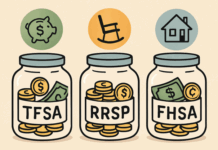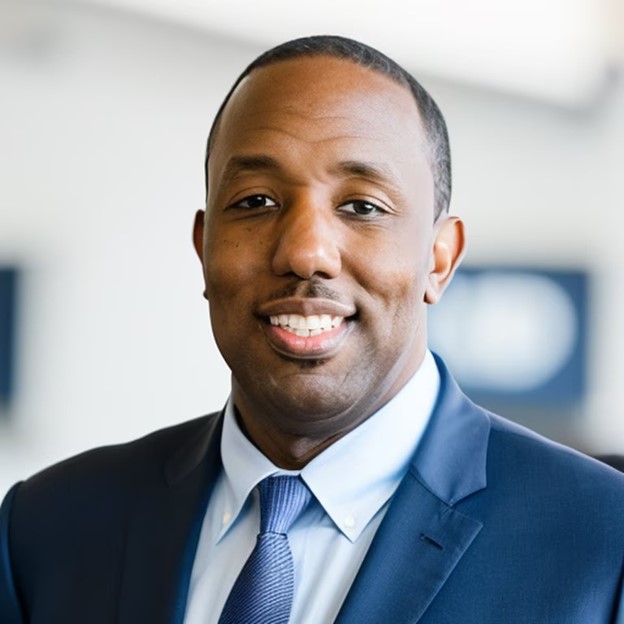The term “affordable housing” has become a misnomer in cities across America, according to Kevin Seawright, a Baltimore-based developer who has spent more than a decade working to make homeownership accessible to first-time buyers.
“I think affordable housing has taken a huge hit,” Seawright said in a recent interview. “The title Affordable Housing versus what actually is affordable housing right now is two different things.”
Seawright, who founded RPS Solutions LLC in 2015, argues that the crisis extends beyond traditional housing policy debates. Even programs designed to help working families have failed to keep pace with the reality of modern housing costs, leaving a generation priced out of homeownership entirely.
The Mathematics of Modern Housing Costs
The disconnect between policy definitions and lived reality becomes clear when examining real-world examples. Seawright pointed to his own daughter’s experience as a recent college graduate searching for her first apartment.
“My daughter just graduated college, and her first apartment is $2,800 a month,” he said, describing a two-bedroom unit that requires a roommate to be financially viable. “Where is that in any ways affordable for a young person literally just graduating out of college?”
Even with parental support, the numbers don’t work for most families. At Baltimore’s median household income of $59,623, housing costs present a significant burden. Data shows that almost half of Maryland renters spend more than 30% of their income on housing, making it difficult to save toward homeownership.
“This is not just about the homeownership aspect of it,” Seawright explained. “This is also about the landlord, tenant rental aspect of it that quite frankly, just affordable living is just not affordable right now.”
Kevin Seawright’s View on Systemic Market Failures
The developer traces the affordability crisis to multiple converging factors, but emphasizes that current market conditions have made traditional pathways to homeownership nearly impossible for first-time buyers.
“First-time homebuyers are having a hard time getting in,” Seawright said. “The inventory is kind of been locked away, so there’s not as much inventory out there as one would like to see to maybe help fluctuate the prices back to a more reasonable standpoint.”
Unlike previous housing downturns that eventually self-corrected, Seawright sees current conditions as fundamentally different. Rising construction costs, limited inventory, and competition from investors have created what he describes as a “systemic issue” rather than a cyclical problem.
“This is not something where one or two developers or one, two main developers can fix it,” he said. “This is a lot larger. This is a systemic issue at this point.”
The crisis affects rural and urban areas alike, challenging assumptions that housing problems are limited to expensive coastal markets. In Baltimore, where Seawright focuses his work, the affordability gap has widened even in neighborhoods historically accessible to working-class families.
Recalibrating Programs for Current Reality
Seawright argues that existing affordable housing programs operate on outdated assumptions about what constitutes affordable pricing. Many subsidy programs were designed when housing costs bore a different relationship to median incomes, making them insufficient for today’s market conditions.
“I think having the amount of inventory and subsidy programs for individuals to actually get in right like, there’s a lot of people who want to own homes, but they have to have the capital to make that happen,” he said.
The developer emphasizes that solutions require coordination among government agencies, financial institutions, and private developers. However, he believes current programs often work in isolation rather than addressing the interconnected nature of the housing market.
“From government, from big businesses, banks, etc. We all have to play a part in how we get individuals owning homes,” Seawright said.
His company works with organizations like Neighborhood Housing Services of Baltimore to provide comprehensive support that goes beyond traditional lending programs. This includes financial literacy education, credit counseling, and post-purchase support designed to prevent foreclosure cycles.
The Economic Ripple Effects
Seawright connects housing affordability to broader economic health, arguing that homeownership drives community investment in ways that rental housing cannot replicate.
“The biggest piece of homeownership is, I tell you it, I say this all the time. When I speak it impacts so many different other like your jobs, your businesses, the businesses in the neighborhood, you know, people own, they’re more apt to use all that. It helps basically stimulate the economy,” he said.
Without accessible homeownership opportunities, communities miss the stabilizing effects that come from residents with long-term stakes in neighborhood success. This creates a cycle where economic development becomes more difficult, further limiting opportunities for local residents.
The developer notes that current conditions make even rental housing unaffordable for many families, creating what he describes as a fundamental crisis in housing access rather than just homeownership.
“If we’re being blatantly honest, it’s even a struggle paying rent at this point,” Seawright said.
Policy Interventions Kevin Seawright Recommends
While acknowledging the complexity of housing markets, Seawright believes targeted interventions could help bridge the gap between current prices and what working families can afford.
He advocates for more robust inventory development, particularly through partnerships between public agencies and mission-driven private developers. The State of Maryland and Baltimore have launched initiatives aimed at returning vacant homes to the market, efforts his company participates in.
“I see a lot more coming down with the department of housing in the State. The city is playing a big part to try to renovate homes and bring people in and do subsidy programs so people can actually take advantage of homeownership,” he said.
However, Seawright emphasizes that subsidy programs alone cannot solve the crisis without addressing underlying supply constraints and cost increases that have outpaced income growth.
“Whether it’s labor, whether it’s supplies, whether you know, whatever it might be. Cost costs are up,” he said, noting how these factors compound affordability challenges.
“It takes a village to fix this issue,” he said, arguing for coordinated approaches that address multiple aspects of housing affordability simultaneously.
Beyond Traditional Affordability Metrics
Seawright’s analysis suggests that housing policy needs fundamental recalibration to match current economic realities. Programs designed for different market conditions may be inadequate when housing costs consume an increasing share of household income.
The developer’s experience working with first-time buyers reveals how traditional affordability calculations have become disconnected from practical accessibility. Families may technically qualify for assistance programs while still being unable to compete in actual housing markets.
“It’s extremely tough right now in Baltimore,” Seawright said. “Affordable housing has been a distinct struggle where first-time homebuyers are having a hard time getting in.”
For Seawright, addressing the affordability crisis requires honest acknowledgment that current conditions represent a fundamental shift rather than a temporary market adjustment. Solutions must account for the reality that what policymakers call “affordable” often remains financially out of reach for the families these programs are designed to serve.
His work in West Baltimore, where RPS Solutions has a project involving 40 to 50 houses near Coppin University, demonstrates both the challenge and potential for mission-driven development to make a difference at the community level.
“Affordable housing is not affordable,” he concluded, summarizing a challenge that extends far beyond Baltimore to cities nationwide where working families find themselves priced out of communities they’ve called home for generations.
Find a Home-Based Business to Start-Up >>> Hundreds of Business Listings.














































